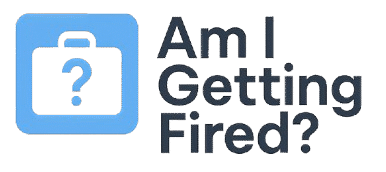Burn Out at Work Symptoms
Feeling “off” but not sure what’s wrong? Burn out at work doesn’t hit all at once. It builds slowly — through fatigue, frustration, and disconnection — until it impacts how you perform, think, and interact. And once it affects your behavior at work, it may quietly threaten your job.
This page covers the most common burn out at work symptoms so you can identify them early and check if your job might already be in danger.
Top Symptoms of Burn Out at Work
If you’re seeing any of the following patterns, your work performance could be slipping — even if you’re trying your best:
- Physical fatigue: You feel constantly drained, even with rest
- Emotional numbness: You’ve stopped feeling excited, nervous, or motivated about anything work-related
- Mental fog: You’re slower to process, think clearly, or remember basic tasks
- Avoidance behaviors: You ignore emails, skip meetings, or put off simple responsibilities
- Isolation: You’re withdrawing from coworkers and social interactions
- Resentment: You’re annoyed by requests, team messages, or being asked to “do one more thing”
- Declining performance: You’re making more mistakes, missing deadlines, or showing up late
Tip: You don’t need all these symptoms to be burned out. Even just a few — especially if they’ve lasted more than two weeks — are enough to take seriously.
Why These Symptoms Matter
Burn out doesn’t just impact how you feel — it changes how others perceive you. If you seem checked out, distant, or hard to work with, your manager may start to question your fit — even if you’re silently struggling.
In competitive workplaces or cost-cutting environments, burned out employees may quietly be moved out, passed over, or let go entirely.
Bottom line: Unaddressed burn out symptoms often lead to job insecurity.
What You Can Do Right Now
- Document your symptoms: Keep track of physical, emotional, and behavioral patterns
- Set a 7-day micro-boundary goal: No work after hours, no skipped breaks, no email over weekends
- Use our AI tool: It scans for workplace firing signals tied to burnout behavior
Click here to check your firing risk instantly
Example: What Burn Out Looks Like in Real Life
Mike, a tech project manager, didn’t realize how far things had slipped. He was still showing up, still attending meetings — but others noticed the decline. He stopped speaking up, missed a few small deadlines, and turned down a leadership opportunity. Within two months, he was replaced without warning.
Lesson: Burn out can be quiet — but not invisible.
Check Your Risk with Our Free AI Scan
Burn out affects your work behavior — and your job security. Use our free AI tool to scan your situation anonymously. You’ll get a score based on risk indicators most commonly tied to termination decisions.
Start your scan now — takes under 60 seconds
Internal Links
FAQ: Burn Out at Work Symptoms
How do I know if I’m burned out or just tired?
Tiredness usually improves with rest. Burn out doesn’t. If your symptoms persist despite sleep or time off, you’re likely burned out.
Can I still perform well while burned out?
Yes — but it usually doesn’t last. Burn out chips away at consistency, motivation, and emotional regulation, eventually hurting performance.
Should I tell my boss I’m burned out?
Only if you trust them and believe support is possible. If not, gather data first — including your risk scan — and make a smart plan.
Is burn out a medical condition?
According to the World Health Organization, burn out is classified as an occupational phenomenon — not a disease — caused by chronic workplace stress.
What happens if I ignore the symptoms?
They often get worse. Burn out left untreated can lead to anxiety, depression, job loss, or even health issues. Don’t wait — act early.
